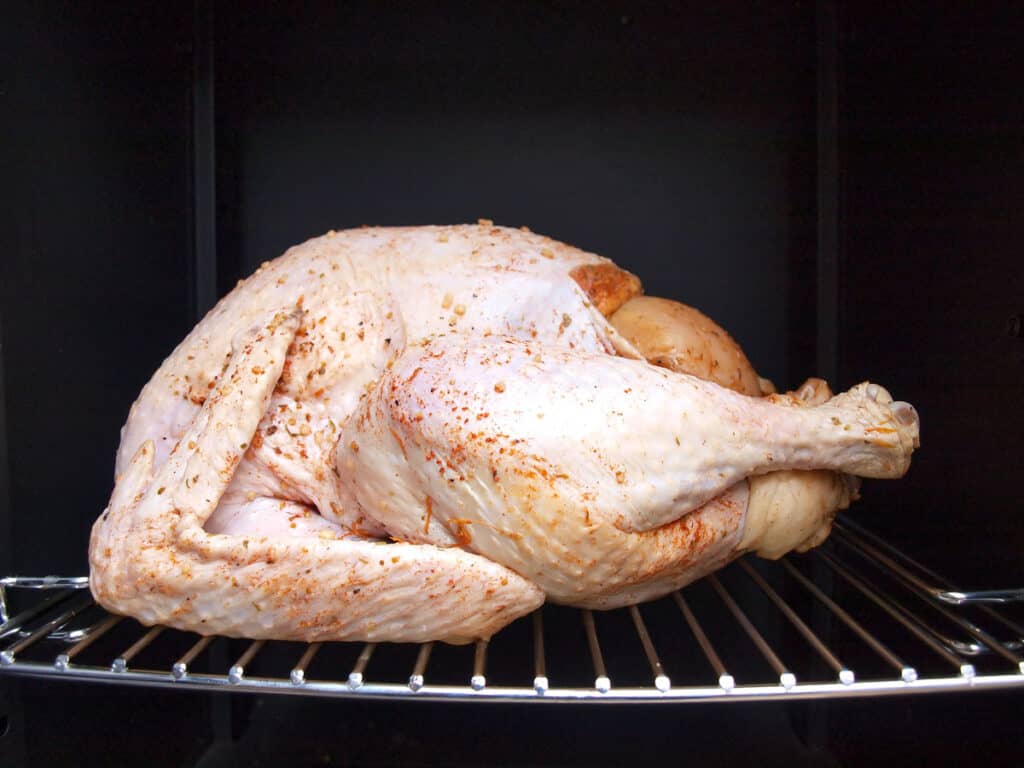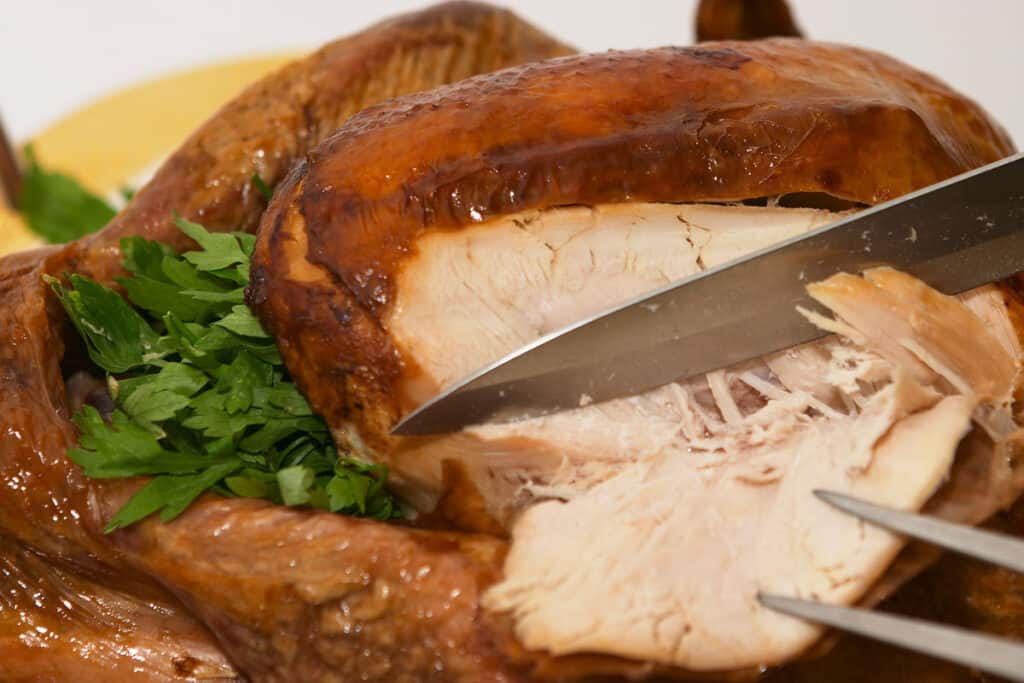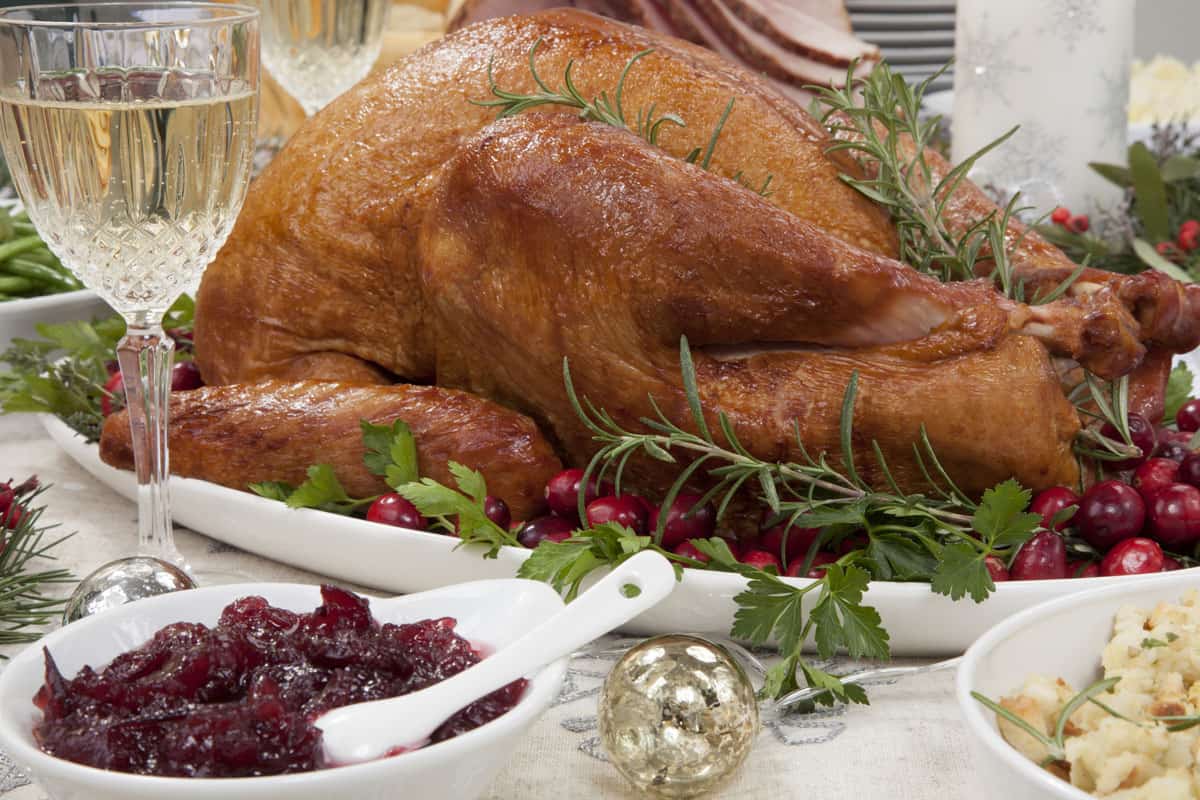Ideally, your smoked turkey should have crisp mahogany skin and a juicy texture. It’s therefore disappointing when you put in all that hard work, only to find that the outside of the bird is soft and rubbery.
If this happens to you, it’s best if you can identify the cause. This will help you prevent it from becoming a common occurrence. That’s where our guide comes in.
Why Is My Smoked Turkey Rubbery?
When the skin on your smoked turkey is rubbery, it’s usually because there was too much moisture in the environment. A low smoker temperature can affect the meat itself, as well as the skin. If the skin is rubbery, you can try to offset it by reverse-searing the turkey over direct heat or browning it in the oven.
What Went Wrong
There are several reasons why your turkey might not have achieved the ideal texture. Let’s take a look at the most common ones.
Low Temperature
One of the worst mistakes a novice can make is setting the smoker temperature too low when turkey is on the menu.
When you’re smoking beef brisket, spare ribs, or pork butt, you want the smoker temperature to hover around 225 degrees Fahrenheit. This allows the collagen in the meat to convert to gelatin while the fat renders and crisps up.
You don’t get the same effect from smoked turkey. The meat is leaner, which means it can withstand higher temps. That’s why chefs usually roast turkeys at 325 or 350 degrees.
Turkey skin, however, does contain a decent amount of fat. If the smoker temperature is too low, the fat in the skin won’t render properly. This can give the skin a flabby texture.
We’ve found that 275 degrees is the best temperature to use for smoked turkey. Any higher, and the skin won’t take on enough smoke to make a difference in the taste. But if it’s set any lower, the skin could turn rubbery instead of crisping up.
There’s another reason why you shouldn’t smoke the turkey any higher than 350 degrees: the skin could burn. That will give the meat an acrid taste, which is almost as bad as rubbery skin.
Tenting the Turkey with Foil
Some pitmasters will tent turkeys with foil to keep the skin from turning too dark during the long smoking process. Since turkey skin is thin and burns easily, this impulse is understandable.
However, tenting the bird can also trap moisture beneath the foil. That means the turkey will steam inside the tent instead of turning crispy.
Our advice would be to skip the foil whenever possible. If you find that the turkey is blackening too rapidly, you can try to tent it, but make sure to leave enough space to allow for sufficient airflow.
Also, never tent the bird until it’s been exposed to the smoke for at least 2 hours. Otherwise, the meat won’t benefit from that lovely wood flavor.
Basting
When roasting a turkey at higher temps, the occasional baste will keep the breast meat from drying out. Since smoking goes at a slower pace, this step is unnecessary.
Basting cools the outer surface of the meat, so it can help it attract more smoke. However, the added moisture is a double-edged sword—it keeps the skin moist and flabby throughout the cook, instead of firming up.
Wrapping
Just as tenting the turkey with foil can trap moisture inside and ruin the texture, wrapping it tightly in foil won’t do it any favors.
When you smoke a rack of spare ribs, the wrapping method can help you predict the cooking time with more accuracy. But it also softens the bark, since the meat is steaming inside the wrapper instead of smoking.
There’s no need to take this step with smoked turkey. Let the meat cook at its own pace without attempting this shortcut. The foil wrapper won’t just affect the texture of the skin—it will block out the smoke, thereby affecting the flavor as well.
Wet Brining
It’s become increasingly popular to soak whole turkey in a saltwater solution before cooking. This technique is known as brining, and it can help the meat retain moisture while improving its flavor.
As you can imagine, though, wet brining saturates the turkey. Since moisture is the enemy of crispy skin, this can be problematic.
Instead of soaking the turkey in a wet brine, try dry brining it instead. Rub the exterior of the bird all over with kosher salt, set it in a roasting pan or on a large platter, and let it sit overnight in the fridge.

The salt will still have a tenderizing effect on the turkey, but the moisture from the meat will dissolve the salt crystals. This concentrated “brine” will make its way back into the muscle fibers, allowing the meat to retain more moisture when it’s cooking.
Dry brining is easier, less time-consuming, and takes up less room in the fridge. Since wet brining may also prevent your turkey skin from achieving the proper texture, try switching to a dry brine the next time you attempt to smoke a turkey.
One final note: Check the label of your turkey before applying any type of brine. Some turkeys are already treated with a brine solution, in which case the label may say “Contains up to 8 percent solution of water and salt,” or something similar.
If the turkey is pre-brined, you shouldn’t use a brine solution. The meat has already received whatever benefits the salt solution would provide, and brining it again would make it taste overly salty.
Smoking Turkey in a Pan
When smoking turkey, it can be tempting to set the bird in a disposable aluminum pan instead of directly on the cooking grate. After all, if you put it right on the grate, you’ll lose all the savory juices that could be used to make gravy.
Although the loss of the drippings is a definite drawback, it’s better not to use a pan for smoked turkey. Cooking it directly on the grate will allow sufficient airflow, keeping the exterior of the bird nice and crisp.
When the turkey sits in a pan, the juices will collect underneath it. That means the bottom of the turkey will be sitting in a bath for the majority of the cooking time, so the skin will be soggy when it’s time to take it off the heat.
If you have your heart set on gravy, create a stock beforehand using store-bought smoked turkey legs. You can make a delicious gravy by whisking this stock into a roux made from equal parts unsalted butter and all-purpose flour.
Water Pan
Most of the time, we advise against using water pans. Although they help keep the smoker temperature stable and prevent the meat from becoming too dry, they also inhibit the formation of bark on smoked meats.
While smoked turkey doesn’t exactly have bark, it won’t benefit from that excess moisture in the atmosphere either. Since the meat is lean and cooks relatively quickly, there’s no need to use a water pan when smoking turkey.
How To Crisp Up the Skin
On the Smoker
Depending on the configuration of your smoker, you may have been using indirect heat for the duration of the cook. If this is the case, the skin might not be as crisp as you’d like.
If the turkey is nearly done cooking and the skin appears to be too soft, you might still be able to salvage it. Try switching it to the hotter section of the cooking grate for a few minutes, turning the bird as needed. This should allow it to brown up.
Be careful not to burn the skin. It should be deep nut-brown in color, not charred and black. If your smoker isn’t configured to allow for direct cooking, try the oven method instead.
In the Oven
Smoking the turkey at 275 is a great way to imbue it with smoke flavor. However, you might need a hotter environment to give the skin the proper texture.
One easy way to get around this issue is to finish the turkey in a conventional oven. After a few hours on the smoker, the wood smoke has done its work, so bringing it up to serving temperature in a regular oven won’t do it any harm.
Keep an eye on the internal temperature of your turkey. When it gets to 145 degrees, remove it from the smoker and transfer it to a roasting pan. Preheat your oven to 325 degrees.
Place the almost-cooked turkey in the oven, then raise the oven temperature to 400. Leave the turkey in the oven until the internal temperature reaches 160 degrees.
Be careful not to overcook the meat. As the oven temperature climbs, the turkey should finish cooking in a hurry. At times like these, meat thermometers with leave-in probes are invaluable.
Why Is My Smoked Turkey Rubbery on the Inside?
Rubbery skin is a common culprit with smoked turkey. But what if the meat itself has a rubbery texture?
Low Smoker Temperature
In addition to preventing the skin from browning, setting the smoker temp too low can also yield rubbery meat. Turkey doesn’t benefit from the low-and-slow method like fattier cuts like beef brisket would.

Set the smoker to at least 275 when making smoked turkey. This should allow the meat to cook through properly while absorbing a decent amount of smoke, leaving you with meat that’s succulent and tender.
Undercooked Meat
When the dark meat of the legs and thighs is rubbery, it’s usually because it hasn’t cooked long enough.
It’s technically safe to cook the dark meat to just 165 degrees Fahrenheit—the same as the breast meat. However, this temperature isn’t ideal for the richer meat on the thighs and drumsticks.
Dark meat should cook to 185 degrees in order to achieve the right texture. At this point, the meat will be silky and tender, rather than chewy and rubbery.
Try not to cook it too long, though. While the dark meat benefits from a higher temperature than the white meat, it will still become dry and stringy if you overcook it.
Remove the bird from the heat when the dark meat achieves an internal temperature of 180 degrees. Residual cooking should take it the rest of the way.
Final Thoughts
More often than not, it’s the skin of the turkey that’s rubbery. While this is disappointing, it doesn’t necessarily mean the meat itself is ruined.
Following our tips for achieving crisper skin should yield better results the next time you put a turkey on the smoker. In the meantime, you can try to salvage this one by browning up the skin over direct heat or in the oven.
Happy grilling!

